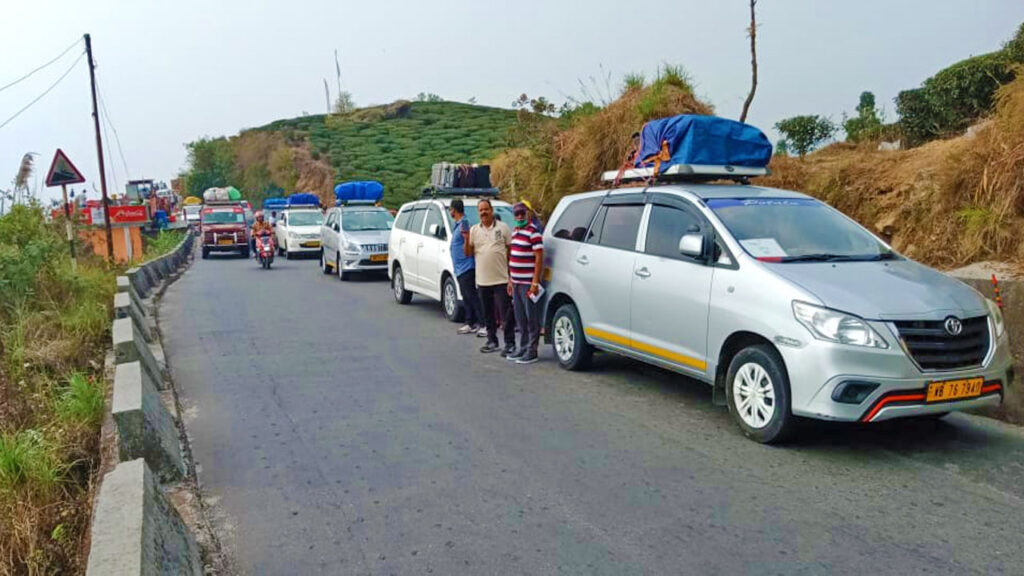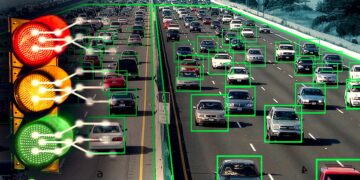Sikkim Set to Launch AI-Driven Traffic Management System on May 25
Sikkim set to launch AI-driven Traffic System, known for its breathtaking landscapes and serene beauty, is all set to take a significant leap in modernizing its urban infrastructure. On May 25, the state will launch an AI-driven traffic management system aimed at streamlining traffic flow, reducing congestion, and enhancing road safety. This initiative marks a pivotal moment in Sikkim’s journey towards becoming a technologically advanced state while preserving its natural charm.
Sikkim Set to Launch AI-Driven Traffic System
Embracing Technology for Better Traffic Management
The introduction of an AI-driven traffic management system in Sikkim is a testament to the state’s commitment to leveraging cutting-edge technology to improve the quality of life for its residents and visitors. This advanced system will utilize artificial intelligence to monitor, analyze, and manage traffic in real-time. By doing so, it aims to address some of the pressing issues related to traffic congestion, road safety, and environmental sustainability.
The AI-driven system will integrate data from various sources, including traffic cameras, sensors, and GPS devices. This data will be processed using sophisticated algorithms to predict traffic patterns, optimize signal timings, and provide real-time updates to commuters. The ultimate goal is to ensure smoother traffic flow, reduce travel time, and minimize the environmental impact of vehicular emissions.

Benefits of the AI-Driven Traffic Management System
Reduced Traffic Congestion: One of the primary benefits of the AI-driven system is its ability to alleviate traffic congestion. By analyzing traffic data in real-time, the system can adjust traffic signals dynamically, preventing bottlenecks and ensuring a steady flow of vehicles.
Enhanced Road Safety: The system will also contribute to improved road safety. AI algorithms can detect unusual traffic patterns or potential hazards, such as accidents or road blockages, and alert authorities promptly. This quick response can help prevent further incidents and ensure the safety of both drivers and pedestrians.
Environmental Sustainability: By optimizing traffic flow, the AI-driven system can significantly reduce the amount of time vehicles spend idling in traffic. This reduction in idle time will lead to lower fuel consumption and decreased emissions, contributing to a cleaner and greener Sikkim.
Improved Public Transportation: The integration of AI technology can also enhance the efficiency of public transportation systems. Real-time data on traffic conditions can be used to adjust bus schedules and routes, ensuring timely and reliable service for commuters.
The Role of Sikkim Car Rental Services
The introduction of the AI-driven traffic management system is expected to have a positive impact on Sikkim’s car rental industry. Car rental services play a crucial role in the state’s tourism sector, providing visitors with the flexibility to explore Sikkim’s scenic destinations at their own pace. With improved traffic management, car rental companies can offer an even better experience to their customers.
Enhanced Customer Experience: Tourists renting cars in Sikkim will benefit from reduced travel times and less time spent in traffic. This will allow them to make the most of their visit, exploring more attractions and enjoying the natural beauty of the state without the frustration of traffic delays.
Better Fleet Management: Car rental companies can leverage the data provided by the AI-driven system to manage their fleets more efficiently. Real-time traffic updates can help in planning vehicle dispatches, avoiding congested routes, and ensuring timely pick-ups and drop-offs.
Increased Demand for Rentals: As traffic conditions improve, more tourists may opt to rent cars to explore Sikkim independently. This could lead to an increase in demand for car rental services, providing a boost to the local economy.
Sustainable Practices: Car rental companies can contribute to environmental sustainability by adopting practices that align with the state’s goals. For example, they can offer more fuel-efficient or electric vehicles, reducing the overall carbon footprint of tourism-related transportation.

Implementation Challenges and Solutions
While the launch of the AI-driven traffic management system is a promising development, it is not without challenges. The successful implementation of such a system requires careful planning, collaboration, and investment. Some of the potential challenges and their solutions include:
Infrastructure Upgrades: Implementing an AI-driven system requires significant infrastructure upgrades, including the installation of traffic cameras, sensors, and communication networks. The state government must ensure that these upgrades are carried out efficiently and without causing major disruptions.
Data Privacy and Security: The collection and processing of vast amounts of data raise concerns about privacy and security. It is essential to establish robust data protection measures to safeguard the personal information of citizens and ensure compliance with relevant regulations.
Public Awareness and Cooperation: For the system to be effective, public awareness and cooperation are crucial. The government should conduct awareness campaigns to educate citizens about the benefits of the AI-driven system and encourage them to follow traffic regulations and guidelines.
Maintenance and Upkeep: The ongoing maintenance and upkeep of the AI-driven system are critical for its long-term success. Regular updates, repairs, and upgrades will be necessary to ensure that the system remains efficient and effective.
Looking Ahead: A Smarter, Safer, and Greener Sikkim
The launch of the AI-driven traffic management system on May 25 represents a significant step towards a smarter, safer, and greener Sikkim. By embracing technology and innovation, the state is poised to enhance the quality of life for its residents and create a more enjoyable experience for visitors.
This initiative is also in line with Sikkim’s broader vision of sustainable development and environmental conservation. As the state continues to modernize its infrastructure and adopt sustainable practices, it sets an example for other regions to follow.
In conclusion, the introduction of the AI-driven traffic management system is a landmark achievement for Sikkim. It demonstrates the state’s commitment to leveraging technology for the betterment of society and the environment. As the system goes live on May 25, residents and visitors alike can look forward to a future where traffic woes are minimized, road safety is enhanced, and the natural beauty of Sikkim is preserved for generations to come.

Book Outstation Cabs in Siliguri at Lowest Fare with Maashree Holiday Travels. Nestled in the pristine beauty of the Eastern Himalayas, Sikkim offers a treasure trove of natural wonders, cultural heritage, and spiritual sanctuaries. Whether you’re drawn to the serene monasteries, breathtaking landscapes, or vibrant local culture, navigating this enchanting state is made effortless with the convenience of taxi services. In this guide, we’ll delve into the world of Sikkim taxi services, exploring the benefits, options, and essential tips for seamless travel through this Himalayan paradise to know more sikkim taxi services. The most reliable and high-quality Cabs.
Packages for Sikkim Car Rental is available at Maa Shree Holidays.
Table of Contents
Toggle





















